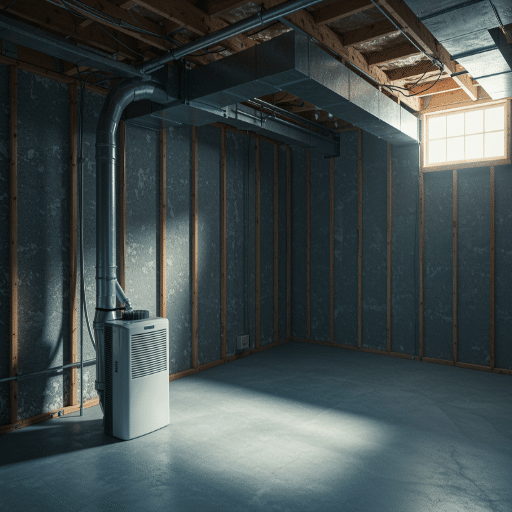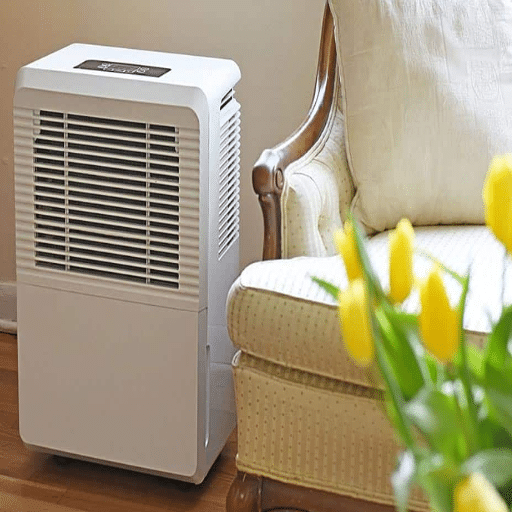When it comes to managing humidity and maintaining comfort in your home, both dehumidifiers and air conditioners can be effective solutions—but which one is more cost-efficient to run? With rising energy costs and an increasing focus on sustainable living, understanding the operational expenses of these two appliances is essential. This blog post dives into the key factors that influence the cost of running a dehumidifier versus an air conditioner, including energy consumption, usage scenarios, and overall efficiency. Whether you’re looking to reduce energy bills or make a more informed appliance purchase, this guide will equip you with the insights needed to make the best choice for your budget and home needs. Keep reading to uncover which option is cheaper in the long run—and why.
How Does a Dehumidifier Work?
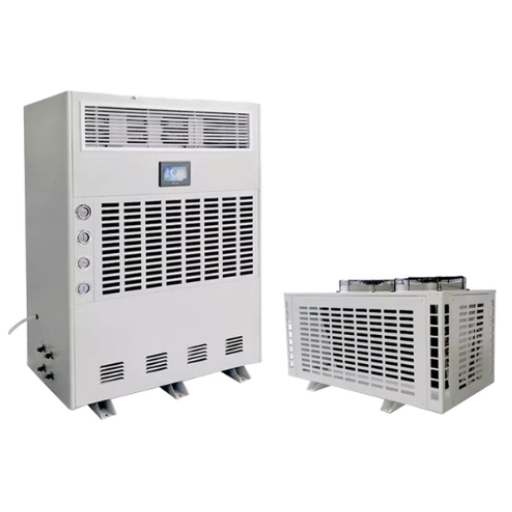
A dehumidifier works by removing excess moisture from the air to maintain a comfortable and healthy indoor environment. It draws in humid air through a fan and passes it over cold coils, where the moisture condenses into water droplets. This water collects in a built-in tank or is drained away via a connected hose. The now-drier air is then reheated slightly and released back into the room. By reducing humidity levels, a dehumidifier helps prevent mold, mildew, and allergens, contributing to overall indoor air quality and comfort.
What is the Purpose of a Dehumidifier?
A dehumidifier plays a crucial role in managing indoor air quality by effectively reducing excess humidity levels in a room or enclosed space. Maintaining relative humidity between 30% to 50% is recommended for optimal comfort and health, and a dehumidifier helps achieve this balance. High humidity can promote mold and mildew growth, which negatively impacts respiratory health and increases the risk of structural damage to your home.
Modern dehumidifiers are equipped with advanced technology, such as digital humidistats and energy-efficient designs, ensuring precise humidity control with minimal energy consumption. On average, some models can extract up to 50 pints of water per day, depending on the room size and humidity conditions. With features like auto-shutoff and continuous drainage options, they are designed for user convenience. By keeping humidity levels in check, dehumidifiers contribute to better air quality, reduced allergens like dust mites, and protect your home’s furnishings, walls, and flooring from moisture-related deterioration.
How Does a Dehumidifier Remove Moisture from the Air?
A dehumidifier works by drawing in moist air, extracting the water content, and then releasing dry air back into the environment. This process typically relies on a fan, coils, and a water collection system. When air enters the machine, it is directed over cold coils, causing the moisture in the air to condense into water droplets. These droplets are collected in a removable tank or sometimes drained continuously through a connected hose. The drier air is then passed over warm coils before being released back into the room, ensuring the temperature remains stable.
Modern dehumidifiers are often equipped with advanced humidity sensors to efficiently monitor and adjust indoor humidity levels to an optimal range of 30% to 50%. Some high-capacity models can collect up to 70 pints of water a day, making them ideal for humid regions or larger spaces like basements. By significantly reducing excess moisture, these devices prevent the proliferation of mold and mildew and contribute to healthier indoor air quality.
Is a Dehumidifier Energy Efficient?
Dehumidifiers have become increasingly energy efficient, thanks to advancements in technology and design. The energy efficiency of a dehumidifier is often measured by its Energy Factor (EF), which indicates the amount of moisture removed per kilowatt-hour (kWh) of electricity consumed. Modern models with an Energy Star certification typically have higher EF ratings, ensuring they use less energy while delivering optimal performance. For example, an Energy Star-certified dehumidifier can use approximately 15% less energy compared to non-certified models, potentially saving up to $175 in energy costs over its lifetime.
To maximize efficiency, many units are equipped with automatic shut-off features, programmable timers, and adjustable fan speeds, which reduce unnecessary energy use. Additionally, selecting the right-sized dehumidifier for your space is critical; an oversized unit may cycle on and off inefficiently, while an undersized one may overwork itself, consuming more energy. Maintaining proper care, such as cleaning filters regularly and ensuring proper placement in the room, can further enhance energy efficiency while extending the device’s lifespan. Choosing an energy-efficient dehumidifier not only lowers electricity bills but also supports a more sustainable home environment.
How Does an Air Conditioner Work?
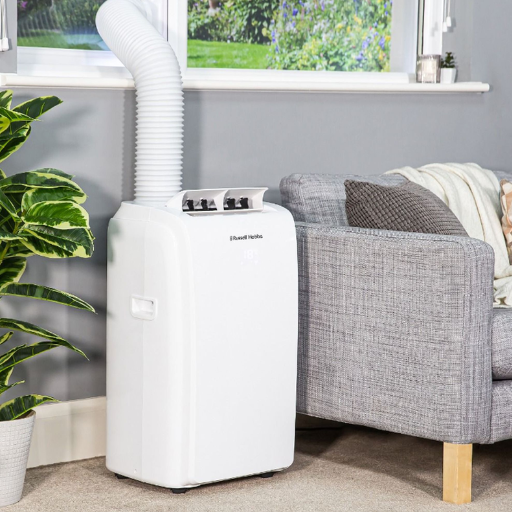
An air conditioner works by removing heat and humidity from indoor air, creating a cooler and more comfortable environment. It does this in three main steps: First, warm air from the room is pulled into the system and passed over cooling coils that contain a refrigerant. This refrigerant absorbs the heat, cooling the air. Next, the cooled air is circulated back into the room, while the absorbed heat is released outside through the unit’s outdoor component. Finally, the system dehumidifies the air by condensing water vapor on the cooling coils, which is then drained away. This process is repeated until the desired temperature is achieved.
How Do Air Conditioners Cool the Air?
Air conditioners utilize a sophisticated refrigeration cycle to extract heat and maintain a comfortable indoor climate. Central to this process is the refrigerant, a chemical compound that transitions between liquid and gaseous states to absorb and release heat efficiently. Modern air conditioners use advanced refrigerants like R-410A, which offer improved efficiency and are more environmentally friendly by reducing ozone-depleting potential compared to older refrigerants such as R-22.
The cooling process begins with the compressor, which pressurizes the refrigerant, significantly increasing its temperature. This high-pressure, high-temperature gas then moves to the condenser coils located outside the building. Here, fans dissipate the heat into the environment, cooling the refrigerant and turning it into a liquid. The cooled liquid flows to the expansion valve, where the pressure drops, causing the refrigerant to cool even further.
This cold refrigerant then passes through the evaporator coils inside the air conditioner. Fans circulate warm indoor air over these coils, enabling the refrigerant to absorb heat from the air and evaporate into a gas. The cooler air is blown back into the room, while the cycle continues as the refrigerant returns to the compressor to repeat the process. According to recent efficiency standards, energy-efficient air conditioners can reduce power usage by up to 30%, making them essential for both comfortable living and sustainable energy practices.
Additionally, air conditioners play a pivotal role in dehumidification by condensing water vapor from the air. This reduction in humidity enhances comfort and prevents the growth of allergens like mold. Advanced models now incorporate smart sensors and variable-speed compressors, providing precise temperature control while further optimizing energy consumption. These technological advancements ensure air conditioners remain one of the most effective tools for managing both temperature and air quality.
What is the Energy Consumption of an AC Unit?
The energy consumption of an air conditioning unit primarily depends on factors such as its size, efficiency rating, usage patterns, and the climate of the region where it is installed. A central air conditioner typically uses between 3,000 and 5,000 watts of electricity per hour depending on its cooling capacity. Smaller window or portable units often consume between 500 and 1,500 watts per hour, making them more suitable for smaller spaces.
To better understand energy efficiency, air conditioners are rated with a Seasonal Energy Efficiency Ratio (SEER). A higher SEER rating indicates greater efficiency and lower energy consumption. For example, an AC unit with a SEER of 16 may consume 20%–30% less energy compared to a unit rated at SEER 13. While initial costs of high-SEER models might be higher, the long-term savings in electricity bills often make them more economical.
Additionally, energy consumption can be influenced by how the unit operates. Frequent cycling on and off, poor insulation, or incorrect thermostat settings can increase power usage. Modern energy-efficient models often include features like inverter-driven compressors and smart thermostats, which can adjust energy use dynamically based on cooling needs. For instance, smart thermostat technology can potentially save users up to 10%–15% annually on cooling costs.
To calculate the monthly energy cost of an AC, you can multiply its power consumption (in kilowatts), the average hours of use per day, and the electricity rate charged locally. On average, in the United States, using a standard 3-ton split AC for 8 hours daily might cost around $50–$150 per month, depending on local electricity rates and energy efficiency.
Understanding these key factors helps homeowners make more informed decisions about air conditioning use while promoting energy savings and environmental responsibility.
How Does Humidity Affect the Efficiency of an Air Conditioning System?
Humidity plays a critical role in the performance and efficiency of an air conditioning (AC) system. High humidity levels force an AC unit to work harder, as it not only cools the air but also removes excess moisture to maintain a comfortable indoor environment. This dual responsibility increases energy consumption and may result in higher electricity bills. For instance, studies suggest that reducing indoor humidity by 50% can improve air conditioning efficiency by as much as 20%-40%, particularly in regions with hot, humid climates.
When the humidity is high, an AC system’s evaporator coil condenses the excess moisture from the air, which is then drained away. However, prolonged exposure to high humidity can strain the dehumidification process. This can lead to challenges such as uneven cooling, system wear and tear, and reduced efficiency over time. To alleviate these issues, some homeowners opt for supplemental dehumidifiers or invest in modern AC systems with built-in humidity control features.
On the other hand, low humidity can also affect efficiency by causing an air conditioning system to cool the air faster than necessary, potentially leading to overuse and discomfort. Striking the right balance—generally keeping indoor humidity levels between 30%-50%—is key to ensuring optimal performance, lower energy consumption, and a more comfortable living space. Advanced smart thermostats and energy-efficient systems can help monitor and maintain these ideal conditions.
What is the Cost to Run a Dehumidifier?
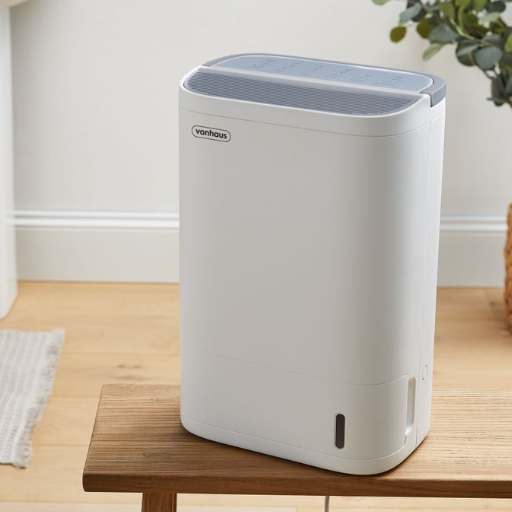
The cost to run a dehumidifier depends on its energy usage, which is typically measured in kilowatt-hours (kWh), and your local electricity rates. On average, a standard dehumidifier consumes between 0.3 to 0.7 kWh per hour. If your electricity rate is $0.15 per kWh, running a dehumidifier for 10 hours could cost between $0.45 and $1.05. For more precise calculations, check your dehumidifier’s energy efficiency rating and factor in how many hours it operates daily. Energy-efficient models can help reduce overall costs while maintaining performance.
How Much Does it Cost to Run a Dehumidifier?
The cost of running a dehumidifier depends on several key factors, including the unit’s wattage, frequency of use, local electricity rates, and the humidity level of the environment. On average, most dehumidifiers use between 300 to 700 watts per hour. For an electricity rate of $0.15 per kilowatt-hour, running a 500-watt dehumidifier for one hour would cost approximately $0.075. If used consistently for eight hours a day, this amounts to around $0.60 per day or roughly $18 per month, depending on the unit’s size and efficiency.
Additionally, larger units designed for high-capacity use typically consume more energy but may operate for shorter periods to achieve the desired humidity level, making them relatively cost-effective in certain situations. Energy-efficient models with certifications such as ENERGY STAR can further reduce electricity expenses, sometimes consuming up to 15% less energy compared to standard units. By combining proper settings like adjusting the humidistat to maintain a balanced 40-50% indoor humidity and using the device only in particularly damp conditions, users can keep costs minimal while promoting a healthier and more comfortable living environment.
Are Dehumidifiers Cheaper to Run?
When weighing whether the dehumidifier may be cheaper to run, factors such as unit type, capacity, energy efficiency, and usage come into consideration. Most modern dehumidifiers, however, incorporate features for energy efficiency which aids in lowering operating costs. For example, a large number of ENERGY STAR-certified dehumidifiers spend around 10% to 20% less energy than non-certified ones, meaning significant savings on power bills in the long run.
The cost incurred to operate a dehumidifier directly correlates with the power consumption, trends in the form of watts. For example, a standard 30-pint unit may pull 300-500 watts/hour, while larger 50 and 70 pint dehumidifiers may suck 600-900 watts/hour. Savings could come from an average electricity rate of $0.10-0.15 per kilowatt hour. This means running the dehumidifier for 8 hours everyday may lead to a daily cost of $0.24 to $1.08 depending on the specific wattage and local rates.
Moreover, ensuring good practices can result in lower operational costs of dehumidifiers. Keeping the appliance in well-insulated spaces, not using them until relative humidity exceeds comfortable levels (over 50%), and cleaning the device’s filters regularly improves cost-efficiency. For those situated in very humid areas, spending on a unit with smart sensors or humidistats can further optimize energy savings, as these features allow the device to switch off automatically when the desired humidity is achieved. Taken together, these approaches make dehumidifiers economical and health supporting aids for indoor moisture management over time.
Factors Affecting the Cost of Running a Dehumidifier
The cost of running a dehumidifier can vary depending on several crucial factors. Understanding these elements allows homeowners to estimate their expenses more accurately and optimize their energy usage. Below is a comprehensive list of the key factors influencing these costs:
- Energy Efficiency Rating
The energy efficiency of a dehumidifier, often reflected in its Energy Star rating, plays a significant role in operational costs. Models with higher efficiency ratings consume less electricity to remove the same amount of moisture, reducing energy bills. According to data from the Department of Energy, Energy Star-certified dehumidifiers can use up to 15% less energy than standard models.
- Size and Capacity
Dehumidifiers are available in various sizes, typically measured in pints of moisture removed per day. Larger-capacity units may consume more electricity but are often more efficient for large spaces, as they operate for shorter durations to achieve the desired humidity level. For smaller spaces, compact units with lower capacity can be more cost-effective.
- Frequency and Duration of Use
The number of hours a dehumidifier runs daily greatly impacts electricity usage. For instance, running a 300-watt unit for 10 hours a day will consume approximately 3 kWh (kilowatt-hours) daily. Extended and frequent operation inevitably increases costs, particularly in regions with persistently high humidity.
- Electricity Rates
Regional or country-specific electricity rates heavily influence how much it costs to run a dehumidifier. Higher utility rates result in increased operational expenses. For example, households in areas with an average rate of $0.15 per kWh will pay more than those in regions with lower rates.
- Ambient Humidity Levels
The initial humidity level of indoor spaces directly affects how long and intensely a dehumidifier needs to work. Areas with consistently high humidity may result in the device working harder, consuming more energy over extended periods.
- Room Temperature
The temperature of the room where the dehumidifier is used is another factor. Many units operate optimally at temperatures above 65°F. When used in cooler environments, these devices may need to work harder, increasing energy consumption.
- Additional Features and Settings
Advanced features such as smart controls, Wi-Fi connectivity, or built-in air purification can enhance convenience but may moderately increase energy usage. On the other hand, settings like Eco Mode or programmable timers can help lower costs by ensuring efficient operation.
By understanding and managing these factors, homeowners can make informed decisions when selecting and using a dehumidifier, ultimately balancing performance with cost-effectiveness.
What is the Cost to Run an Air Conditioner?
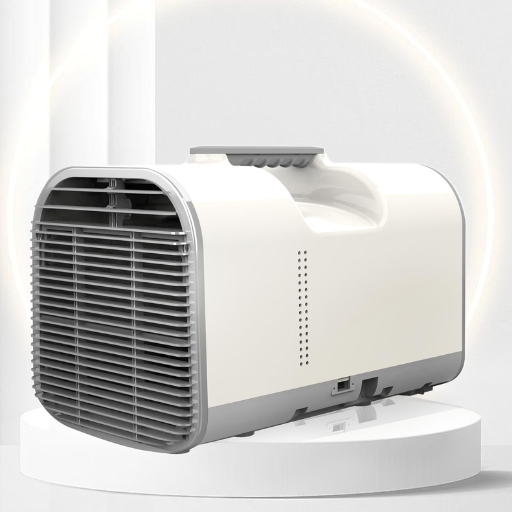
The cost to run an air conditioner depends on a few key factors:
- Energy Efficiency Rating (EER or SEER)
More energy-efficient units generally consume less electricity, reducing operating costs.
- Size of the Unit
Larger units typically use more electricity than smaller ones. Choosing the right size for your space is crucial for both comfort and cost savings.
- Usage Duration
The number of hours the air conditioner runs each day directly affects your electricity bill. For instance, using it 8 hours daily will cost more than 4 hours.
- Electricity Rates in Your Area
The cost per kilowatt-hour (kWh) varies by location. Higher electricity rates mean higher overall costs.
On average, running a central air conditioning system can cost anywhere between $0.30 and $0.70 per hour, depending on the factors above. To estimate your monthly costs, multiply your unit’s power consumption (measured in kWh) by your local electricity rate and the number of hours used per month.
How Much Does it Cost to Run an AC Unit?
The cost of running an air conditioning (AC) unit largely depends on factors like the unit’s power rating, local electricity rates, and how often it is used. Central air conditioning systems typically consume between 2,000 and 5,000 watts of electricity per hour. For instance, if the electricity rate in your area is $0.15 per kilowatt-hour (kWh), running a 3,000-watt unit for one hour would cost approximately $0.45.
To calculate the daily cost, consider how many hours the AC is running. For instance, if the unit operates for 8 hours daily, the total cost would be $3.60 per day at the same rate. Over a month, with consistent use, this would amount to approximately $108. However, these costs can vary if your unit uses energy-saving features like programmable thermostats or energy-efficient modes, which reduce overall consumption.
Window air conditioners and portable units tend to consume less power, typically between 500 and 1,500 watts, making them more cost-effective for cooling smaller spaces. For a 1,000-watt unit, the hourly cost would be closer to $0.15—around $36 per month if used 8 hours daily.
Energy efficiency ratings, such as the Seasonal Energy Efficiency Ratio (SEER), can also influence operating costs. Higher SEER-rated units consume less energy while providing the same level of cooling, making them a practical choice for long-term savings. Additionally, regular maintenance, such as cleaning filters and ensuring proper insulation, can help reduce energy waste and keep costs manageable.
Are Air Conditioners More Expensive to Run?
Air conditioners can be more expensive to run depending on several factors, such as the type of AC unit, usage habits, energy efficiency, and local electricity rates. A central air conditioning system, for example, consumes an average of 3,000 to 5,000 watts per hour when in use. This is significantly higher compared to other household appliances like refrigerators, which typically use around 150 to 250 watts per hour. Similarly, running a portable or window air conditioner may consume between 500 and 1,500 watts per hour, depending on the size and cooling capacity.
Energy efficiency ratings, like the SEER (Seasonal Energy Efficiency Ratio), play a critical role in determining operational costs. A modern, energy-efficient unit with a high SEER rating can significantly reduce electricity usage compared to older models. For example, upgrading from a SEER 10 to a SEER 16 system can lower energy costs by up to 38%. Additionally, smart thermostats and timers can help optimize cooling schedules, preventing energy waste during periods of low occupancy.
Electricity rates also vary widely based on your location. For instance, in the United States, the cost of electricity ranges from around $0.10 to $0.20 per kilowatt-hour (kWh) on average. This means that running a central air conditioner for 8 hours daily could cost approximately $0.80 to $3.20 per day, depending on these rates and the unit’s power consumption. Comparatively, smaller appliances like ceiling fans, which use only about 50 to 100 watts per hour, can cool a room more inexpensively but may not provide the same temperature control as air conditioning.
To lower air conditioning expenses, consumers are encouraged to perform regular maintenance, such as cleaning filters and inspecting ductwork, to ensure optimal performance. Combining these practices with appropriate use of fans, proper insulation, and other energy-saving strategies can make air conditioning more affordable over time while keeping indoor spaces comfortable.
Factors Affecting the Running Cost of Air Conditioning
- Energy Efficiency Ratings (EER and SEER)
The energy efficiency of an air conditioning unit greatly impacts its running cost. Units with higher Energy Efficiency Ratios (EER) or Seasonal Energy Efficiency Ratios (SEER) consume less electricity to provide the same cooling output. For instance, a unit with a SEER rating of 20 will be more cost-efficient than one with a SEER rating of 13. Investing in high-efficiency units can reduce energy expenses by up to 30%.
- Size of the Unit
An air conditioner that is too large or too small for the space can lead to inefficient cooling and higher operational costs. For example, an undersized unit will run continuously to meet demand, while an oversized unit will frequently cycle on and off, both leading to increased energy use and wear.
- Usage Patterns
The more frequently and for longer periods an air conditioning unit runs, the higher the associated costs. Maintaining a consistent temperature, using programmable thermostats, or operating the unit only during necessary times can help manage expenses.
- Insulation Quality
Poor insulation in a building allows cooled air to escape, forcing the air conditioner to work harder to maintain the desired temperature. Proper insulation for walls, ceilings, and windows can lower energy needs and reduce operational costs by approximately 10–15%.
- Outdoor Temperature and Climate
Hotter climates or periods of extreme heat increase air conditioning usage, significantly impacting electricity bills. Research has shown that a 10°F increase in external temperature can raise cooling costs by as much as 25%.
- Maintenance and Cleaning
Regular maintenance is essential to keep air conditioners running efficiently. Dirty filters, clogged coils, and neglected duct systems force the unit to work harder, consuming more energy. Studies indicate that routine maintenance can lower energy consumption by 5–15%.
- Electricity Tariffs
Local electricity rates play a significant role in air conditioning costs. Regions with higher energy rates will naturally see increased expenses, even for the same level of usage.
- Smart Features and Technology
Modern air conditioners equipped with smart technology, such as advanced sensors or Wi-Fi-enabled controls, can optimize energy usage by making automatic adjustments. These features, while reducing costs over time, may initially involve higher upfront expenses.
- Age and Condition of the Unit
Older air conditioning systems tend to be less efficient than newer models. Aging units may also require more frequent repairs, further increasing overall expenses. Replacing outdated units can lead to long-term cost savings.
- Building Design and Layout
Open floor plans, excessively large windows, or buildings exposed to direct sunlight can make cooling more challenging and expensive. Adding reflective window films or shades can reduce heat intake and ease the burden on the air conditioning system.
Each of these factors contributes to the running cost of operating an air conditioner. Understanding these details allows consumers to make informed decisions to lower expenses while keeping their indoor environment comfortable.
Comparing the Energy Efficiency of Dehumidifiers and Air Conditioners
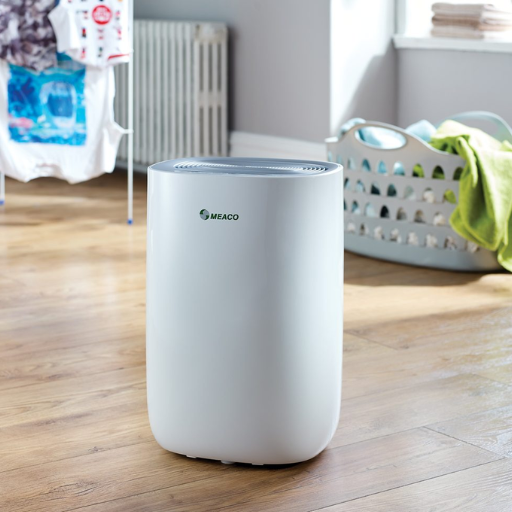
Evaluating the energy efficiency of dehumidifiers versus air conditioners requires understanding their basic functions. Air conditioners cool the air and removes heat and some humidity, while dehumidifiers remove excess moisture. Dehumidifiers are often more energy efficient than air conditioners when it comes to humidity control because they use less energy compared to air conditioners that cool and dehumidify at the same time. However, when temperature control is also needed, air conditioners are more useful because using both appliances would be too expensive. It all comes down to the space’s requirement—whether it prioritizes humidity control over cooling or vice versa.
Which is More Energy Efficient: Dehumidifier vs Air Conditione
Analyzing the energy efficiency of dehumidifiers and air conditioners requires studying the energy use patterns and functions of both systems. Dehumidifiers, for example, are appliances that remove excess moisture from the air while keeping the humidity levels stable. They operate at a relatively low energy cost. Modern ENERGY STAR certified dehumidifiers, for example, can range from 300 watts an hour depending on size and capacity. This makes them an efficient option for moisture control in moderate climates.
The functions of air conditioners, on the other hand, are two-fold: lowering the temperature and dehumidifying the air at the same time. This versatility, however, comes with higher energy consumption (a mid-sized air conditioner spends around 1,000 – 2,500 watts per hour). Energy efficiency is usually determined using the Seasonal Energy Efficiency Ratio (SEER) or Energy Efficiency Ratio (EER) – the higher, the better the appliance works. With advanced models equipped with inverter technology, energy consumption can be reduced because the appliances adjust power output dynamically, unlike older models.
Ultimately, the decision is based on particular needs. If a building or space’s excess humidity needs to be controlled, then a dehumidifier is usually the least expensive and most energy-efficient option. On the other hand, in hot and humid areas where temperature control is also important, the additional energy used to run a high-efficiency air conditioner with a SEER rating can be justified because it provides both cooling and dehumidifying services simultaneously.
Do Portable Air Units Have Different Energy Costs?
Yes, portable air units can have different energy costs depending on their design, size, and energy efficiency features. Generally, portable air conditioners tend to consume more energy compared to window or split units due to their lower efficiency in cooling and higher reliance on energy-intensive components. For example, a typical portable air conditioner uses between 1,000 to 2,000 watts per hour, depending on its cooling capacity, measured in BTUs (British Thermal Units). Smaller units rated at 8,000 BTUs may consume less energy, but they are often suitable only for smaller spaces, while larger units at 14,000 BTUs can cool bigger areas but require significantly more electricity.
Energy efficiency ratings such as the EER (Energy Efficiency Ratio) or the more modern CEER (Combined Energy Efficiency Ratio) provide key insights into the operating costs of portable units. Units with a higher EER or CEER rating are more efficient and cost less to run over time. For example, a portable unit with an EER of 9.5 can save more energy compared to one with an EER of 7.0 when cooling the same space under similar conditions.
It is also important to consider insulation and room conditions when assessing energy costs. Portable air units often face challenges with heat exchange efficiency because of the venting mechanism, which might unintentionally allow hot air to re-enter the room. This can result in higher energy consumption as the unit works harder to achieve the desired temperature. Using insulated window kits for the exhaust and keeping the area well-sealed can mitigate some of these inefficiencies.
When comparing energy costs, it’s critical to weigh the convenience and portability of these units against their typically higher energy consumption. For occasional or supplementary cooling in areas where permanent installations are not an option, portable air conditioners can be a practical choice despite slightly elevated operating costs.
Environmental Impact of Dehumidifiers and Air Conditioning Systems
Both dehumidifiers and air conditioning systems play a vital role in maintaining indoor comfort, but their environmental impact cannot be overlooked. These devices contribute to energy consumption and greenhouse gas emissions, primarily due to their reliance on electricity, which is often sourced from fossil fuels.
Dehumidifiers, while smaller in scale, consume considerable power depending on their size and capacity. A standard dehumidifier can use anywhere from 300 to 700 watts per hour. Over prolonged usage, this energy consumption can add up, particularly in regions where humidity levels remain high throughout the year. Additionally, older dehumidifier models tend to lack modern energy-efficient features, further compounding their environmental footprint.
Air conditioning systems, especially central and split units, significantly contribute to global energy demand. According to recent data, air conditioners account for roughly 10% of total electricity usage worldwide. The situation is exacerbated by the use of hydrofluorocarbon (HFC) refrigerants, potent greenhouse gases that can have thousands of times the global warming potential (GWP) of carbon dioxide. Although international agreements like the Kigali Amendment aim to reduce HFC usage, many systems still operate on older, less environmentally friendly refrigerants.
Mitigating these impacts requires a two-pronged approach—implementing more energy-efficient technologies and adopting sustainable practices. Initiatives such as Energy Star ratings and seasonal energy efficiency ratios (SEER) help consumers identify eco-friendlier models. Additionally, proper maintenance, such as cleaning filters and ensuring adequate ventilation, can optimize operational efficiency and reduce energy waste. For broader solutions, transitioning to newer systems utilizing low-GWP refrigerants offers a promising path toward minimizing environmental harm.
How to Choose Between a Dehumidifier and an Air Conditioner
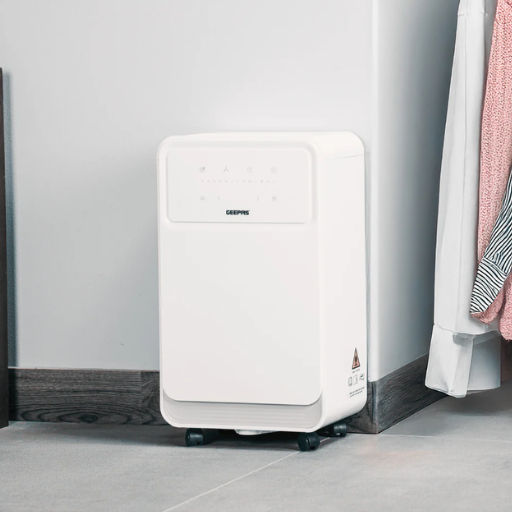
Choosing between a dehumidifier and an air conditioner depends on your primary need. If your space feels damp or you notice excess moisture causing issues like mold or musty odors, a dehumidifier is ideal for reducing humidity and maintaining a balanced indoor atmosphere. On the other hand, if your priority is cooling the air to create a comfortable temperature, an air conditioner is the better option. While both can improve indoor air quality, air conditioners primarily focus on cooling, whereas dehumidifiers address humidity levels. Evaluate your specific concerns—temperature or moisture control—to make the most effective choice for your environment.
When Should You Use a Dehumidifier?
A dehumidifier is particularly useful in areas with high humidity levels, which can often lead to discomfort, mold growth, and potential health issues. According to environmental health studies, indoor relative humidity levels should ideally remain between 30% and 50% for optimal comfort and air quality. If humidity rises above this range, it can encourage dust mites, mildew, and other allergens to thrive, exacerbating allergies and respiratory problems.
You should consider using a dehumidifier if you notice signs such as condensation on windows, a persistent musty odor, or visible mold growth on walls or ceilings. High-humidity spaces like basements, bathrooms, or laundry rooms are common candidates for dehumidifier use. For example, research shows that running a dehumidifier in a basement can reduce moisture significantly and prevent structural damage caused by prolonged dampness.
Additionally, regional climates play a significant role. If you live in a humid climate, particularly in areas near large water bodies or tropical zones, a dehumidifier can help maintain a healthy indoor environment. Modern dehumidifiers are equipped with energy-efficient features and built-in hygrometers, allowing users to set precise humidity levels with ease. By keeping moisture under control, dehumidifiers not only improve comfort but also protect household items, wooden furniture, and electronics from humidity-related damage.
When is an Air Conditioner More Suitable?
When deciding whether an air conditioner is more suitable, I focus on scenarios where temperature control is the primary need. If the goal is not just reducing humidity but also significantly cooling a space during hot weather, an air conditioner is the better option. It effectively lowers indoor temperatures while simultaneously dehumidifying the air, making it ideal for areas with intense heat or during peak summer months.
Consideration of Indoor Air Quality and Humidity Levels
Maintaining a healthy level of comfort combined with indoor air quality and humidity is a balancing act I try to maintain. Too much humidity can be uncomfortable and foster the growth of allergens, whereas too little can result in dryness and irritation. With the right air conditioning, dehumidifiers, or humidifiers, I focus on refreshing air quality and maintaining healthy levels of moisture for personal wellness. I regularly monitor humidity levels, ensuring that this optimal balance is achieved.
Reference Sources
-
The Impact of Desiccant Dehumidification on Classroom Humidity Levels2:
- Key Findings: Desiccant systems provided better humidity control compared to conventional AC systems, maintaining spaces 10-15 grains per pound drier at peak conditions. However, desiccant systems had higher operating costs due to increased fan power and additional latent load management.
- Methodology: Field tests were conducted in a school environment, comparing conventional AC systems with desiccant dehumidification systems across multiple pods with detailed monitoring of energy use, humidity, and ventilation rates.
-
Experimental Investigation of Liquid Desiccant-Based Indirect Evaporative Cooling3:
- Key Findings: A hybrid system combining liquid desiccant dehumidification and indirect evaporative cooling achieved significant energy efficiency improvements. Dew point effectiveness increased by up to 19.2%, making it a viable pre-air-conditioner or standalone system.
- Methodology: Experimental setups tested various parameters, including bypass air ratios, desiccant flow lengths, and inlet air conditions, to optimize cooling and dehumidification performance.
-
Direct Air Capture Technology and Its Application4:
- Key Findings: Integrating direct air capture (DAC) with air conditioning systems can reduce energy consumption by up to 37% in buildings. Coupling DAC with renewable energy sources further enhances efficiency and sustainability.
- Methodology: The study analyzed DAC systems integrated with HVAC units, focusing on energy savings and carbon capture efficiency in controlled indoor environments.
-
Analysis of Building Electric Energy Consumption Using Cooling Degree Day Methods5:
- Key Findings: Improved cooling degree day methods, incorporating latent loads, provided more accurate predictions of energy consumption in buildings. Wet-bulb temperature-based calculations outperformed traditional methods in correlating energy use with cooling needs.
- Methodology: Statistical analysis of energy consumption data from a 13-story office building, using various degree day calculation techniques and base temperature determination methods.
Frequently Asked Questions (FAQs)
Q: Is it cheaper to run a dehumidifier or an air conditioner?
A: Generally, it is cheaper to run a dehumidifier than an air conditioner. Dehumidifiers use less electricity as they only remove moisture out of the air, whereas air conditioners both cool the air and remove humidity, requiring more energy.
Q: How do I choose a dehumidifier for my home?
A: When choosing a dehumidifier, consider the size of your home and the level of humidity present. Dehumidifiers are generally rated for specific room sizes, so selecting one that matches or exceeds your space size will ensure efficiency. Additionally, consider features like energy efficiency, noise level, and portability.
Q: What is the electricity cost of running a dehumidifier vs an air conditioner?
A: The electricity cost of running a dehumidifier is typically lower than an air conditioner. Dehumidifiers are designed to remove moisture without significantly cooling the air, resulting in lower energy consumption compared to air conditioners, which require more power to cool and dehumidify the air.
Q: Do I need a dehumidifier if I already have an air conditioner?
A: While air conditioners do remove some humidity, a dedicated dehumidifier can be more effective at controlling high humidity levels without making the air too cold. If you experience high humidity that your air conditioner cannot manage, a dehumidifier would be a useful addition.
Q: Can portable air conditioners replace the need for a dehumidifier?
A: Portable air conditioners can remove some humidity from the air but are not as effective as dedicated dehumidifiers. If humidity control is your primary concern, a dehumidifier would be more efficient at maintaining the desired humidity levels.
Q: How does the size of your home affect the cost of a dehumidifier or an air conditioner?
A: The size of your home directly impacts the cost of operating a dehumidifier or an air conditioner. Larger spaces require more powerful units, which consume more energy and thus increase electricity costs. Selecting appropriately sized units can optimize efficiency and reduce costs.
Q: How do air conditioners and dehumidifiers work together in an HVAC system?
A: In an HVAC system, air conditioners and dehumidifiers can complement each other. While the air conditioner cools the air, the dehumidifier can target excess moisture, providing a more comfortable indoor environment without overcooling the space.
Q: What are the benefits of using a dehumidifier over an air conditioner for humidity control?
A: Using a dehumidifier for humidity control is often more energy-efficient and cost-effective compared to relying solely on an air conditioner. Dehumidifiers directly remove moisture without excessively cooling the air, resulting in less energy usage and maintaining a comfortable temperature.
Q: What factors influence the dehumidifier running costs?
A: Factors influencing dehumidifier running costs include the unit’s energy efficiency, the level of humidity in the space, and how often the dehumidifier needs to run. Energy-efficient models and proper sizing can help reduce electricity costs.
Q: How does the air conditioner cost compare to the cost of a dehumidifier?
A: Air conditioner costs are generally higher than the cost of a dehumidifier due to their dual function of cooling and dehumidifying. Dehumidifiers are specifically designed to remove humidity and are typically more cost-effective in terms of both initial purchase and ongoing electricity usage.


